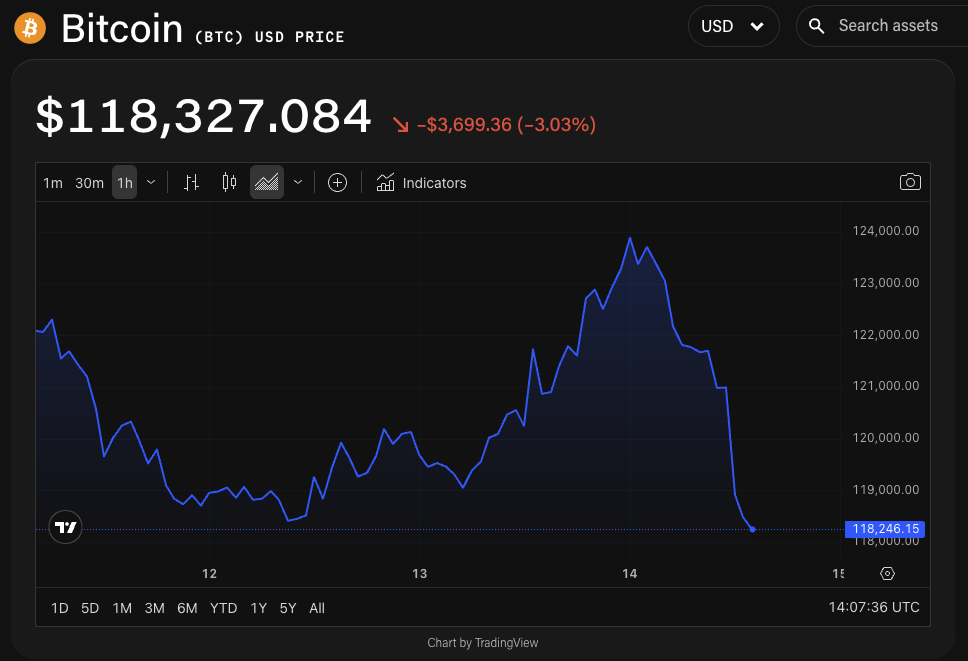U.S. Treasury’s Stance on Bitcoin Holdings: A Comprehensive Overview
In a recent interview on Fox Business, U.S. Treasury Secretary Scott Bessent made it clear that the U.S. government will not be purchasing additional Bitcoin for the Strategic Reserve. Currently, the government’s Bitcoin holdings are estimated to be valued between $15 billion and $20 billion. Bessent emphasized that while the government is not acquiring new Bitcoin, it plans to maintain its current assets, particularly those that have been seized from criminal activities. With the evolving landscape of cryptocurrency, this decision highlights the administration’s cautious yet progressive approach to digital assets.
The Establishment of the Strategic Bitcoin Reserve
The genesis of the U.S. Strategic Bitcoin Reserve can be traced back to a series of executive orders issued during former President Donald Trump’s administration. Shortly after his inauguration, Trump initiated efforts to create a regulatory framework for digital assets, which included forming a Presidential Working Group on Digital Asset Markets. This group, led by crypto czar David Sacks, aimed to evaluate the feasibility of developing a national digital asset stockpile, an essential step for the country to adapt to the rapidly changing financial environment.
On March 6, Trump accelerated these efforts by establishing the U.S. Strategic Bitcoin Reserve. This reserve was built upon the approximately 198,022 Bitcoin already owned by the federal government, primarily acquired through seizures associated with criminal or civil proceedings. The executive order underscored the administration’s intent to manage these assets responsibly and ensure they are not sold off unnecessarily.
Future of Bitcoin Acquisitions and Government Strategy
While Bessent confirmed the government would not be purchasing additional Bitcoin, he did mention that future confiscations could augment the existing holdings. This strategy underscores a dual approach: retaining seized assets while being cautious about acquiring new ones. The U.S. government seems committed to enhancing its digital asset portfolio through established legal channels rather than direct purchases, ensuring no cost burden falls on taxpayers.
Moreover, the government has expressed intentions to maintain its substantial gold holdings of 261.5 million ounces, valued significantly lower than market rates. Bessent indicated that while the government might not revalue its gold reserves, they would continue to serve as a store of value. This caution regarding asset valuation suggests a broader trend of prudent financial management within federal asset holdings.
Unpacking the Crypto Landscape
As these developments unfold, the crypto market reacted sharply to Bessent’s comments, with Bitcoin experiencing a decline from above $121,000 to below $118,000 within a short window. The broader market followed suit, with Ethereum and other cryptocurrencies also witnessing dips. This decline coincided with inflation data reports indicating a year-over-year increase in the U.S. Producer Price Index (PPI), which may have spooked investors and impacted market sentiment.
The U.S. PPI rose 3.3%, exceeding forecasts and marking the highest annual increase since February. Such data feeds into a larger narrative about economic conditions shaping investor behavior, particularly within the volatile crypto market. This interplay between government policy, economic indicators, and market response will be crucial for both policymakers and investors moving forward.
Implications for the Future of Digital Assets
As the U.S. Treasury navigates complex waters in the digital asset space, its approach could serve as a bellwether for how other nations handle similar matters. The emphasis on leveraging seized assets instead of direct purchases will likely resonate with taxpayers and investors who favor responsible governance. Additionally, the adherence to developing a regulatory framework highlights the government’s recognition of cryptocurrencies as significant financial instruments in the 21st century.
Future implications may include a need for updated regulations and a more transparent approach to digital asset management. The working group’s deadline to submit a comprehensive crypto roadmap has already passed without much fanfare, leaving many in the industry waiting anxiously for further direction from federal regulators.
Conclusion: A Measured Path Forward for U.S. Crypto Policy
In summary, the U.S. Treasury’s strategy regarding Bitcoin holdings reflects a fundamental shift in its approach to digital assets. By prioritizing the retention of confiscated assets and refraining from new acquisitions, the government appears focused on responsibly managing its digital portfolio. As the crypto landscape continues to evolve, it remains critical for policymakers to balance innovation with regulatory oversight.
Monitoring future developments in this area will be essential, as both domestic economic conditions and international crypto trends influence U.S. policy. Ultimately, the Treasury’s decisions today will shape the financial landscape and dictate how digital assets are integrated into the broader U.S. economy in the years to come.


